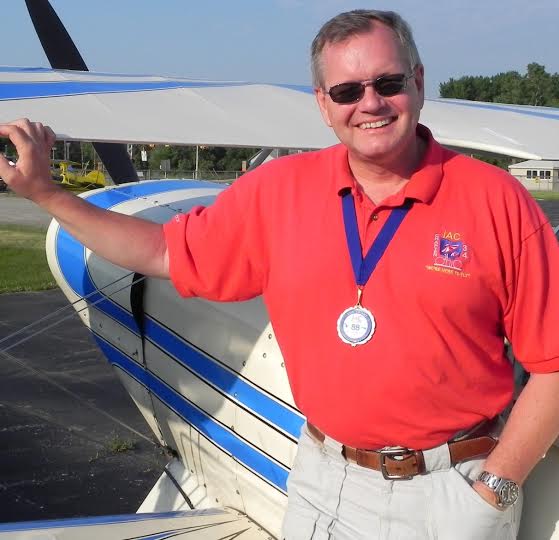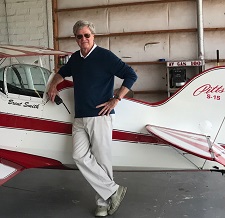Flying the 2023 Sportsman Sequence - Part 9 – Flying the Spin

There are a million techniques out there to entering the spin and getting out on heading, most of them airplane specific. A pilot simply cannot come to a contest without spin training, and airplane specific spin training abounds.
I teach Rich Stowell’s Emergency Maneuver Training (EMT) program and recommend anyone else who does. Please see the IAC list of aerobatic flight schools. Patty Wagstaff’s school in Florida and Greg Koontz’s school in Alabama are also great places.

Aerobatic coach John Morrissey, who also had a lovely tour of North Vietnamese anti-aircraft gun and missile sites, has written great articles in Sport Aerobatics magazine about spins over the years. Among them I highly recommend his “23 Seconds” article in May 2016 issue.
I strongly feel you all must see John Morrissey’s YouTube video “Survive the Spin (1999)” even if you’ve had spin training eons ago. It is well done and will give you food for thought. https://www.youtube.com/watch?v=_6HsRH9l_bQ
I will talk, instead, about what the judges must see.
Again, to quote “the good book,” (IAC Rule Book)
“When the aircraft stalls, the aircraft must simultaneously move around all three flight axes:
(a) the nose will pitch toward the ground;
(b) the aircraft will yaw;
(c) the aircraft will roll.
Failure to achieve simultaneous motion about all three axes will be downgraded 1 point per 5 degrees of deviation.
Example: If 10 degrees of pitch and 10 degrees of roll are observed before any motion about the yaw axis is seen, a four (4) point deduction would be made.”
Four things must be kept in mind for spins.
First, don’t settle or climb on the entry line. I watch my altimeter as I am slowing down toward the beginning of the spin departure. I will actually climb a tad at the end, which is usually not seen. It also gets the nose higher for a better entry.
The second thing is the entry criteria, which was covered above.
Third, the spin exit must be practiced enough so that a finish on heading is reliable, and the pilot must maintain orientation throughout. This is critical. I can’t count how many times I’ve seen a spin finished 45 to 90 degrees early or late and watched the competitor charge off, unknowingly, in a “zero-inducing” direction. Keep your situational (directional) awareness.
Fourth, get reliable ground coaching to make sure your down lines are straight down. Setting the trim before the sequence begins (and leaving it there throughout) at something slightly above looping speed will help in this area. Please see the 2 articles we’ve done on setting aerobatic trim.
Aerobatic Trim Part 1, by Gordon Penner, Sport Aerobatics September 2020, pg 20
Aerobatic Trim Part 2, by Gordon Penner, In the Loop October 2020
Holding a good down line is a perception thing, both on the part of the pilot and the ground observer, which is why you need ground coaching and practice.
A lot of new people tend to push too much going downhill, getting “negative,” or over on their backs. When your headset is flying “up” off of your head you may be pushing too much!
Since the spin is 1-1/4 the aircraft will exit the spin with a low wingtip. Again, from the rule book: “An aircraft has forward inertia as it decelerates through stall speed. This issue is more visible when the figure is performed downwind and is less visible when performed into the wind.” Because of this forward inertia the flight path through the spin is not exactly vertical initially. In a 1 turn or 1-1/2 turn spin this will not cause a low wing, but in a 1-1/4 or 1-3/4 spin it will.
The spin must be stopped on heading, but as the down line is being established the rudders must be utilized to make sure neither wing is low.
As for the downline, the book says: “After autorotation stops, the aircraft must establish a vertical down line with the wings parallel to the horizon. The pilot may achieve this by:
- (a) Immediately after rotation stops, pitching to the vertical down line and simultaneously bringing the wings parallel to the horizon, or
- A ‘blended’ recovery in which Autorotation stops, the aircraft pitches to the vertical down line, and the wings become parallel to the horizon simultaneously.”
Lastly, the second you finish the spin and begin the down line, hammer the power! You need to feed a lot of energy into the next maneuver. If you have full power, you will gain speed quicker while losing less altitude (believe it or not!) and your elevator will work better for the pullout.
Have Fun and fly Safe!
Articles in the "2023 Sportsman Sequence" Series
Flying the 2023 Sportsman Sequence by Gordon Penner, In the Loop January 2023
Flying the Wedge by Gordon Penner, In the Loop February 2023
Flying the Immelman, by Gordon Penner, In the Loop March 2023
Flying the Loop, by Gordon Penner, Sport Aerobatics December 2019
Flying the Half Cuban, by Gordon Penner, In the Loop May 2023
Flying the Humpty Bump, by Gordon Penner, In the Loop June 2023
Flying the Competition Roll, by Gordon Penner, In the Loop July 2023
Flying the Hammerhead, by Gordon Penner, In the Loop August 2023
Flying the Spin, by Gordon Penner, In the Loop September 2023
Flying the Aerobatic Turn, by Gordon Penner, In the Loop October 2023
Online Resources:
Introduction to Aresti, by Brian Howard, www.iac.org/aerobatic-figures
More articles on typical Sportsman category figures
Half Cubans, Accurate 45-degree downlines, by Giles Henderson, Sport Aerobatics June 2011, pg. 28
A Roll is a Roll is a Roll...., by Gordon Penner, Sport Aerobatics, August 2008, pg. 16
Aerobatic Trim Part 1, by Gordon Penner, Sport Aerobatics September 2020
Aerobatic Trim Part 2, by Gordon Penner, In the Loop October 2020
Ask the Experts about Spins, by Gordon Penner with references from Rich Stowell, Gene Beggs, Erich Muller, and Bill Kirshner

